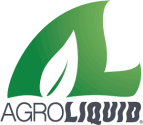In agriculture, there are always a few factors that are out of our control — specifically Mother Nature. This proved to be true in 2019 with widespread flooding and extreme temperatures — both highs and lows.
Focusing on the factors we can control will ensure we make the best possible crop, regardless of what Mother Nature throws our way. Understanding how phosphorus (P) and potassium (K) fertilizers interact with other inputs and elements in the soil will help growers decide which inputs and application timings will best suit their particular operation.
Phosphorus (P)
Phosphorus is an essential plant nutrient and very important for numerous plant processes and crop production. It is a vital component of DNA and RNA, the building blocks of proteins and protein synthesis. The Adenosine triphosphate molecule (ATP) molecule is responsible for storing and transferring all of the energy produced and needed by the plant. At the core of this ATP molecule are phosphates, responsible for all of the activity of ATP. Phosphorus also plays a major role in the stimulation of new root growth.
“Tie up” within the soil is the primary concern with P fertilizers. In acidic soil conditions, P will tend to get tied up by iron, aluminum and manganese. In basic soil conditions, calcium will be the major component of P tie up. Phosphorus is most available to the plant in a soil pH range of 6.3-6.8. Common liquid fertilizers, such as ammonium polyphosphate (10-34-0) and orthophosphate (9-18-9), applied in the early spring will also have a likely chance of being tied up if a gypsum application was made in the fall.
Choosing a P fertilizer that is protected from tie up will ensure that you get the most out of your fertilizer investment and that your crop will receive the required amount of P needed.
Potassium (K)
Potassium is also an essential plant nutrient responsible for many vital processes within the plant. It plays a major role in plant water relations and photosynthesis. It regulates the opening and closing of the stomata, in turn regulating the uptake of CO2 from the atmosphere, an important aspect of photosynthesis. Potassium is also responsible for the translocation of sugars within the phloem, and other nutrients and water within the xylem. Potassium must be in adequate supply for the plant to function properly and produce the best crop possible.
Potassium and sodium have a unique relationship that is many times overlooked. The use of poor-quality well water in many areas has caused sodium levels to build up in the soil. In these situations, the soil solution will contain more sodium ions than K ions.
These two ions are “look alike” ions and the plant will not discriminate against which one it takes up. An excess of sodium in the soil solution will tend to induce a K deficiency in the plant. This is an important aspect to address in your growing operation.
It is also important to understand the solubility of K fertilizers. For example, SOP is a great tool for building soil K levels. However, it is important to recognize how much is actually going to be available to the crop.
For example, dry SOP has a solubility of around 6%. A 500-pound application of 0-0-50 will deliver 250 pounds of K20, so at 6% solubility, only about 15 pounds of K20 will be immediately available to the crop. Over time, with precipitation or irrigation, more of the K20 will become available.
Supplementing this with an in-season, highly soluble, liquid K fertilizer is a great way to ensure your crop will get the large amount of K it requires. Of course, not all liquid K sources are created equal. Some are high in chlorides and other salts that can be toxic to plant health. Growers will want to choose a K source that is free of chlorides.
Having a better understanding of how P and K fertilizers interact in the soil and with other inputs will help growers get more out of their fertilizer investment this coming season. Choosing a P fertilizer that is protected from tie up and a K fertilizer that is highly soluble and free of chlorides will ensure healthier plants to achieve 2020 yield goals.
No-Till Farmer's Focusing on Smarter, Sustainable Fertilizing Strategies series is brought to you by AgroLiquid.
For over 35 years, AgroLiquid has been on a mission to engineer the best plant nutrition products while safeguarding your crops, the soil and the environment. Click here to learn more about AgroLiquid's suite of fertilizer products and agronomic services.








Post a comment
Report Abusive Comment